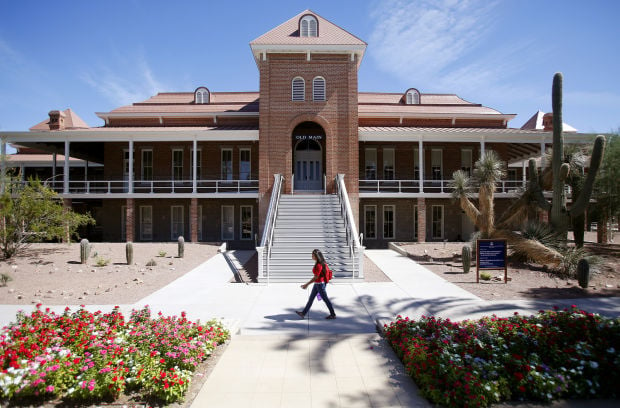On Tuesday, the Arizona Board of Regents gave us choice again.
Or maybe it was just the illusion of choice.
It’s been five years since the regents announced they had just one finalist, Ann Weaver Hart, for the then-vacant UA president’s job. She came to campus for a visit, already selected by the board.
On Tuesday they gave us two candidates to replace Hart. Now that feels like a victory.
The two are not household names — they’re Sethuraman “Panch” Panchanathan of Arizona State University and Dr. Robert C. Robbins of Texas Medical Center in Houston. And they aren’t well-known locals like rumored candidates Joaquin Ruiz, the dean of the UA’s college of science, or Provost Andrew Comrie. In that sense, the finalists may feel a bit uninspiring to Tucsonans.
But then again, they each seem to have strong backgrounds. And last time around we landed the sitting president of Temple University as the sole finalist, with disappointing results.
Perhaps as important, though, is that the process has opened up just enough to make us see what we’re missing.
Twenty years ago, in 1997, the regents brought to campus three candidates to replace Manuel Pacheco as University of Arizona president. From that series of visits, they chose Peter Likins.
Just 11 years ago, in 2006, the regents brought to campus four candidates for all-day visits. They finally picked Robert Shelton from that group.
Now what we’re getting is two publicly known candidates, from whom the regents will pick one before there is ever a campus visit. The final interviews of the two candidates are scheduled for Monday, March 6. Then the campus visit of the final pick, alone, is scheduled for Wednesday, March 8. No, it’s not the reverse, not visits first and a selection later.
This was the result after the search committee drew “serious interest” from 40 to 50 prospects, and interviewed some in February without making their names public. This increasing confidentiality of president searches is worrying to some in academia.
Executive search firms seem to have made these president hunts more secretive, said Judith Wilde, a professor at the Schar School of Policy and Government at George Mason University. She and a colleague reviewed 84 contracts public universities made with these firms in 2015-2016 — the sort of deals the regents made with R. William Funk and Associates for the UA president search.
“The best way to find out about a candidate is to use the faculty network,” Wilde told me Tuesday. “Faculty have great networks, and it can give you a lot of information about the candidates that you’re not going to have access to.”
Indeed, Regent Ron Shoopman told my colleague Carol Ann Alaimo that it was the search firm that recommended that only the final finalist visit campus.
Rudy Fichtenbaum, president of the American Association of University Professors, said: “The faculty should have a major role in the selection of the president. The process by which the president is chosen should be an open process.”
That didn’t happen this time: Just three out of the 27 members of the search committee were faculty members, and the process has not been open, except to those, like UA psychology professor Lynn Nadel, who signed a non-disclosure agreement in order to be allowed on the committee.
Via email, I asked Nadel, chair of the faculty Senate and a member of the search committee, whether he thought the process was good enough. He wrote me back from Australia:
“The process is what it is, determined by the regents. What I would prefer to focus on is the quality of the product — I think we have two exciting candidates, both of whom have strong academic credentials and considerable administrative accomplishments in the recent past. With regard to the lack of internal candidates, I think the choice of finalists reflects a consensus for change that outweighed the obvious strengths of the two individuals you mention.
“The desire for new ideas and energy won the day. But, again, I prefer to emphasize the positive, which is that either of these two finalists could become an excellent new president of the UA.”
That may well be the case. Panchanathan, a computer scientist and electrical engineer, has the advantage among the state’s powers-that-be of being a Phoenix guy and holding the title of executive vice president of the ASU Knowledge Enterprise. This is a highfalutin title that undoubtedly appealed to those demanding that the universities act as enterprises that sustain themselves as much as possible.
As a heart surgeon, Robbins isn’t a stereotypical academician, but he’s done plenty of scientific research and at least has a specialty of his own outside of educational administration, the subject in which Hart got her Ph.D. Plus, Robbins oversees a vast medical network based in Houston.
Apparently, these are accomplished people who impressed the appointed search committee.
So why can’t these two be asked to have meaningful interaction with the university community before one is chosen? If they are as good as the committee seems to think, then both of them ought to be able to handle that, no matter what the search firm says. And if they can’t, we should find that out before a contract is signed.
As it is, even with a little choice brought back into the process, almost all the power remains in the hands of the regents and their appointees.





